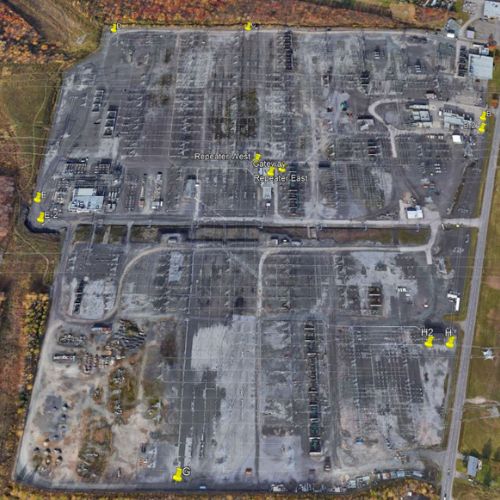SpiderMesh: Ensuring Connectivity in High Electromagnetic Interference Environment
Introduction: Connect and access
In this case study, we will conduct a detailed analysis of the results obtained through the utilization of the SpiderMesh protocol in a high-interference environment. We will then examine its efficiency in handling disruptions caused by electrical line noise and evaluate its reliability in terms of connectivity and data acquisition. Lastly, we will discuss the implications of these findings and emphasize the importance of SpiderMesh’s robustness in complex environments like the one we have studied.
Context
An electricity distribution company has decided to call on Smartrek and challenge its innovative Spidermesh technology for real-time monitoring of its infrastructure.
Before choosing Smartrek, the company had experimented with other communication protocols but faced interference with nearby power lines. Additionally, the wired solution proved to be costly for the company.
The problematic
Electric power lines emit electromagnetic energy that can interfere with communication signals, causing data loss and compromising system reliability and efficiency.
Solution
Let’s start by exploring our innovative SpiderMesh protocol and what makes it stand out from other communication protocols.
In a nutshell, with Spidermesh, our proprietary radio mesh protocol, we can develop custom networks of sensors based on the data you need and the topology of the terrain, giving you the highest quality of data in the industry. By acquiring Smartrek, you become independent from any third-party connectivity providers & own your infrastructure, avoiding recurrent costs and technology obsolescence.
When implementing our technology for the electricity distribution company, we conducted a series of tests that yielded positive results. These tests have demonstrated the efficiency of our technology, even in environments with high levels of interference.

Methodology and network application
For this project, we have utilized the following Atrax products:
The methodology used to assess the connectivity of our network across the entire infrastructure is as follows:
1. The gateway is installed in an electrical panel, serving as a Faraday cage at the management station, which is located approximately 1 km away diagonally.
2. Installation of a repeater at chest height on each side of the management station to extend the signal range. These repeaters are placed to bypass obstructions caused by the station and surrounding equipment.
3. During the connectivity test, the repeater remained inside the car to simulate realistic conditions. The car’s windows and body caused a 2-3 dB decrease.
4. Two points where the connectivity was lost were identified: point B, which is located behind the maintenance building at a distance of 365 meters, and point H, situated behind another building at a distance of 345 meters. By moving the repeaters to points B-2 and H-2 respectively, the connection was restored in a stable manner.
5. Verification of connectivity to points C, D and E positive, in order to compare the impact of the obstruction.
6. Taking into account the network configuration, repeaters A-1 and A-2 are installed on the southwest and northeast sides of the central building respectively, and node A-3 in the vehicle is also serving as a repeater.
7. Despite a slope obstructing ground connectivity for points H and G, point G exhibited good connectivity, highlighting the network’s efficiency even in complex conditions.
| Position | A-1 | A-2 | A-3 |
|---|---|---|---|
| B behind | – | – | – |
| B line of sight | 61 | 80 | 106 |
| C | 56 | 82 | 73 |
| D | 76 | 91 | 70 |
| E behind | 66 | 91 | 57 |
| E line of sight | 59 | 69 | 51 |
| G | 63 | 90 | 71 |
| H behind | No connection | ||
| H next | 62 | 74 | 73 |
8. The A-4 was added near the entrance of the station, to expand coverage to points where connection was initially not possible.
| Position | A-1 | A-2 | A-3 | A-4 |
|---|---|---|---|---|
| H behind | 67 | 54 | 82 | 69 |
| H line of sight | 60 | 53 | 89 | 66 |
| B behind | 62 | 68 | 82 | 73 |

Conclusion
In conclusion, the tests demonstrated that Smartrek’s SpiderMesh communication protocol has successfully overcome the connectivity challenge in high-interference environments.
Our solution can manage electromagnetic interferences and maintain reliable connectivity even in complex conditions. Our sensor network is highly efficient, and our radio mesh protocol is flexible, ensuring faultless connectivity even in high-frequency environments.
The results of this case study confirm that Smartrek is an ideal solution for companies seeking a robust and high-performing solution for real-time infrastructure monitoring. Companies can enjoy stable, high-quality connectivity even in challenging conditions by investing in our technology. Smartrek is a reliable partner for overcoming connectivity challenges in demanding environments.